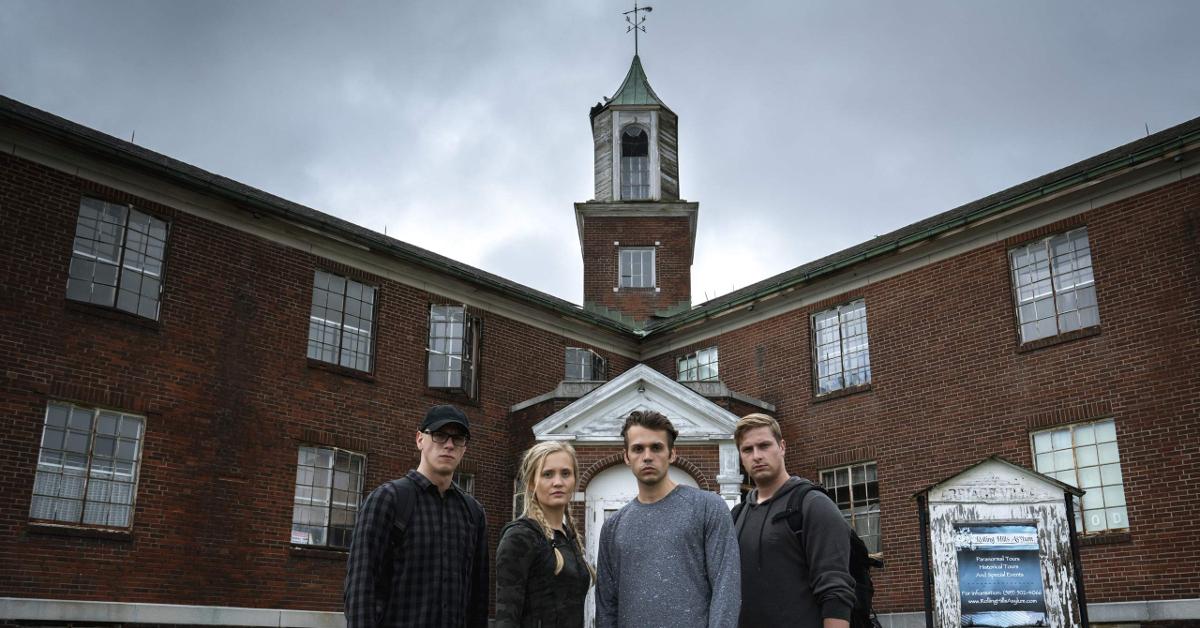How Twisted Is the History Behind the Trans-Allegheny Lunatic Asylum, Actually?
Updated Feb. 12 2021, 12:38 p.m. ET

As a paranormal investigator, I always hear stories about "iconic" haunts that have a long and storied mythology of being super spooky. Sometimes these reputations are built by the virtue of investigations themselves: whether it's creepy audible voice phenomena, crazy apparitions, or other inexplicable activity. Other times, it's the history of a location that makes it so terrifying, and then you have places where it's a combination of it all, which appears to be the case for the Trans-Allegheny Lunatic Asylum.
What is the history of the Trans-Allegheny lunatic asylum?
Construction on the hospital began in 1858 in Weston, W.VA. It was built in the Kirkbride plan style of psychiatric hospitals, a system popularized by Philadelphia Psychiatrist Thomas Story Kirkbride, one of America's earliest vocal political advocates for acknowledging, treating, and developing studies for mental illness.

TA's main building was touted as one of America's largest hand-cut stone structures in the world, and is still the second-largest hand-cut sandstone building in the world (Moscow's Kremlin is the only other structure with this distinction that's larger).
Even though contractors kept renovating and adding to the building up until 1881 (when T.A. was finally completed) it was actually opened up to care for patients in 1864.
There's plenty of unsavory Trans-Allegheny history for shows like 'Destination Fear' to draw inspiration from.
The building's first workers were Black: a local newspaper wrote that "seven convict negroes" began construction and they were later joined by prison workers to prep the grounds for the project. As was the custom at the time, skilled stone-mason laborers from Germany and Ireland were then brought in to build Trans-Allegheny in a Gothic Revival and Tudor Style.
Right smack dab in the middle of building the hospital, the Civil War broke out and construction was halted in 1861. West Virginia's decision to secede from the United States meant that resources allocated to the hospital were then designated to the war effort. In 1864, the first patients were admitted.
The hospital included a farm, a cemetery, a waterworks plant, and a dairy. The amount of acreage on this historically haunted place was, coincidentally, 666 acres (I know, I know). It wasn't until 1902 that a gas well was drilled on the hospital grounds in 1902 and 11 years later, its named was changed to Weston State Hospital, a slightly less scary name.
But as time progressed, the conditions for patients in the hospital worsened.
The building was originally constructed to only house some 250 patients at a time, but that didn't stop caretakers from admitting more and more people into the building from the outset. In 1880, some 770 patients packed its halls. In 1938, that number more than doubled to 1,661 and it grew to 1,800 in 1949 until it hit a whopping 2,600 patients by the 1950s.
The Charleston Gazette reported in 1949 that many patients suffered from abominable sanitation protocols, not enough furniture, poor lighting, and sparse heating. The overcrowding of mental asylums was a problem across America and during this time, the proposed solution was the West Virginia Lobotomy Project headed by Walter Freeman and the State.
The theory was that lobotomized patients didn't pose a risk to themselves or the state and could re-matriculate into society. However, only a third of these procedures were ever successful. By the time the 1980s had rolled around, there were drastic national changes in the treatment of individuals with mental illnesses and at Weston (T.A.), it was found that many patients who were deemed uncontrollable were just locked in cages.
In February of 1986, the West Virginia governor of the time, Arch Moore, announce plans to turn Weston State Hospital into a prison and that a new mental illness treatment facility would be created elsewhere. The William R. Sharpe Jr. hospital was opened in Weston in 1994 and the "old" building would be simply closed down, never becoming a prison.
Now it's a haunted tourist attraction and museum, and it's been restored to its original name: the Trans-Allegheny Lunatic Asylum.